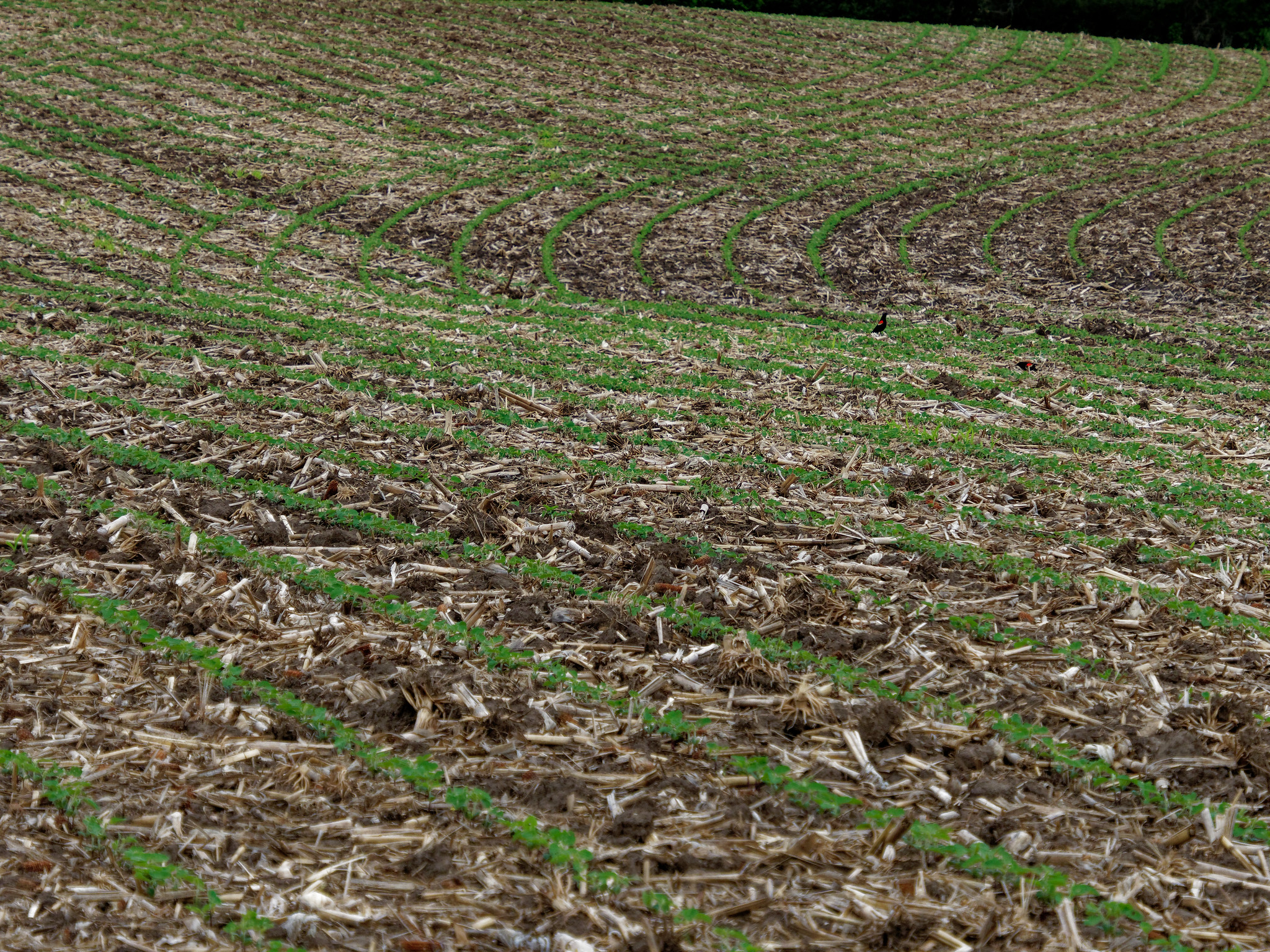Greetings from southern Illinois. It's exciting to be back writing for Illinois Soybean Association (ISA) as a Soy Envoy. With the 60th Anniversary of ISA and the soybean checkoff, I thought a little history might be a good way to kick off the spring.
My career started on the family farm in western Gibson County, Indiana, in the Wabash River bottoms. We grew corn, popcorn, soybeans, and wheat, as well as seed corn, Indiana Certified seed wheat and soybeans, and a few pigs. It was a busy place, and Dad and Grandpa were pretty progressive farmers in their day. Grandpa joined the Indiana Corn Growers 125 BPA club in 1965 – I'm guessing it was picked on the ear.
While I helped on the farm from an early age, my first crop was 6.5 acres of wheat in the fall of 1974 for my FFA project. It was followed by double-crop soybeans, but like most farmers at that time, we didn't have a no-till planter, so all the wheat stubble was moldboard plowed under to prepare a seed bed.
The beans were planted in 38-inch rows with a John Deere 1294 8-row wide planter. It was the first plateless planter JD made, and it had a soybean cup very similar to the JD Max-Emerge unit that was its successor. It was more a controlled spill than a meter. It had a "shoe" instead of disc openers and had little depth control.
On double-crop, we split the middles, so every acre was planted twice. We were also lucky enough to be able to irrigate to make sure the beans had enough moisture to germinate, but no center pivots until 1979, so we watered about 25 acres a day and moved pipe and risers.
Crop protection was much easier then. We had Lasso and Lorox. Treflan and Paraquat were also available, but those were our choices. None of them worked great, so getting to canopy was very important then, as it is now.
Conventional soybeans would be cultivated many times – up to four. I spent many hours on a 4020 with a JD 4-row rolling cultivator – not my favorite way to spend a summer. Our post-emergence weed control was hard, cold steel!
Our genetics then were almost exclusively public varieties. Williams, Cutler, and Mitchell were most popular. Asgrow, FS Hisoy in Illinois, and Soybean Research Foundation (SRF) were the first "private" variety seeds in our area, followed in the mid-70's by some upstart: a seed corn company called Pioneer.
We planted mostly in 36–to 38-inch rows to be able to cultivate, and populations varied from 90 to 120 pounds per acre. They were planted thick because we didn't really control the planting depth very well – some were 3 inches deep, a few scattered on top of the ground, and everything in between. It was not very precise.
Seed treatments were used on certified seed, but in the days of saved seed, it was just cheaper to plant more seeds, hoping enough came up. The average cost of public seed at that time was about market price plus $2.50 a bushel for processing and bagging. In 1975, that would have been about $9.00 per bushel – add $0.75 a bushel to treat them.
Some of the neighbors were experimenting with double-crop no-till. It was a risky business, as there were no herbicides to clean up if your Paraquat and Lasso mix didn't hold. The wheat straw was your main weed control.
There were a few growers that tried aerial seeding soybeans into standing wheat a few weeks before harvesting the wheat. This gave the beans a head start, but if there was too much rain, you were mowing the beans off as you cut wheat – or too little rain, and the beans just simply didn't germinate. But experience is the best teacher, and we all learn best from mistakes. These lessons led to innovations in no-till in the late '70s and early '80s – not only for double-crop but also for soil and water conservation.
Soybean harvest in the 1970s wasn't that much different from today – other than the size, reliability and comfort of the combines. OK, maybe really different.
In 1975, our big bean machine was a new JD 4400 with a gas engine, no A/C, and a 13.5 ft. platform. But it was huge step up from the JD 55 it replaced. By the end of the decade, the corn combine – a 300 Massey – was replaced by a JD 7700. Why two combines? Remember, we were a seed farm. Less cleanup meant less chance of contaminated seed beans. The popcorn and seed corn were still picked by the ear, so we had self-propelled pickers until about 1980.
Then things really started to change. More on the '80s in the next article.



 and then
and then
Enjoyed and related to your article. It was good to re- live some of those experiences. Probably was a real eye opener for the young guys that may have had no idea. Thanks